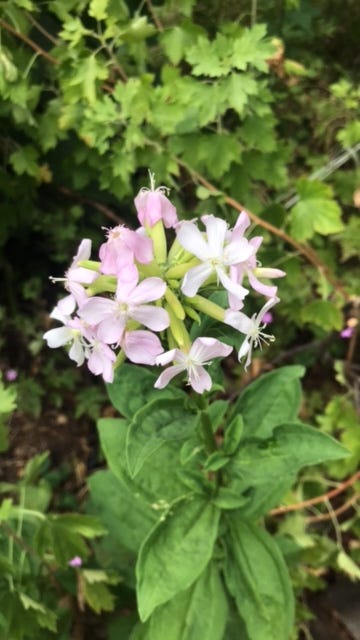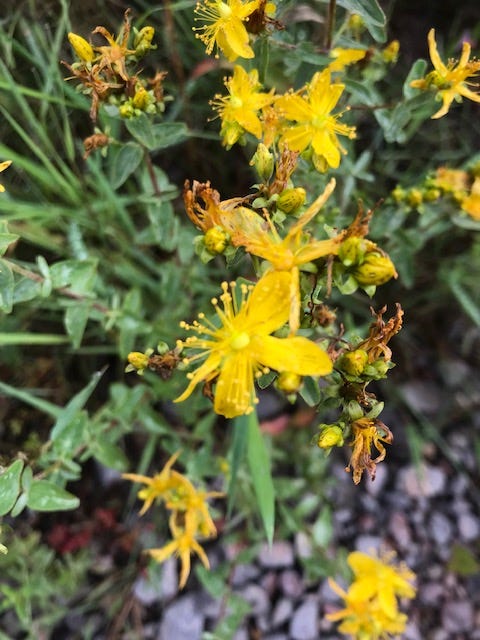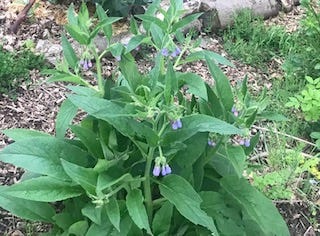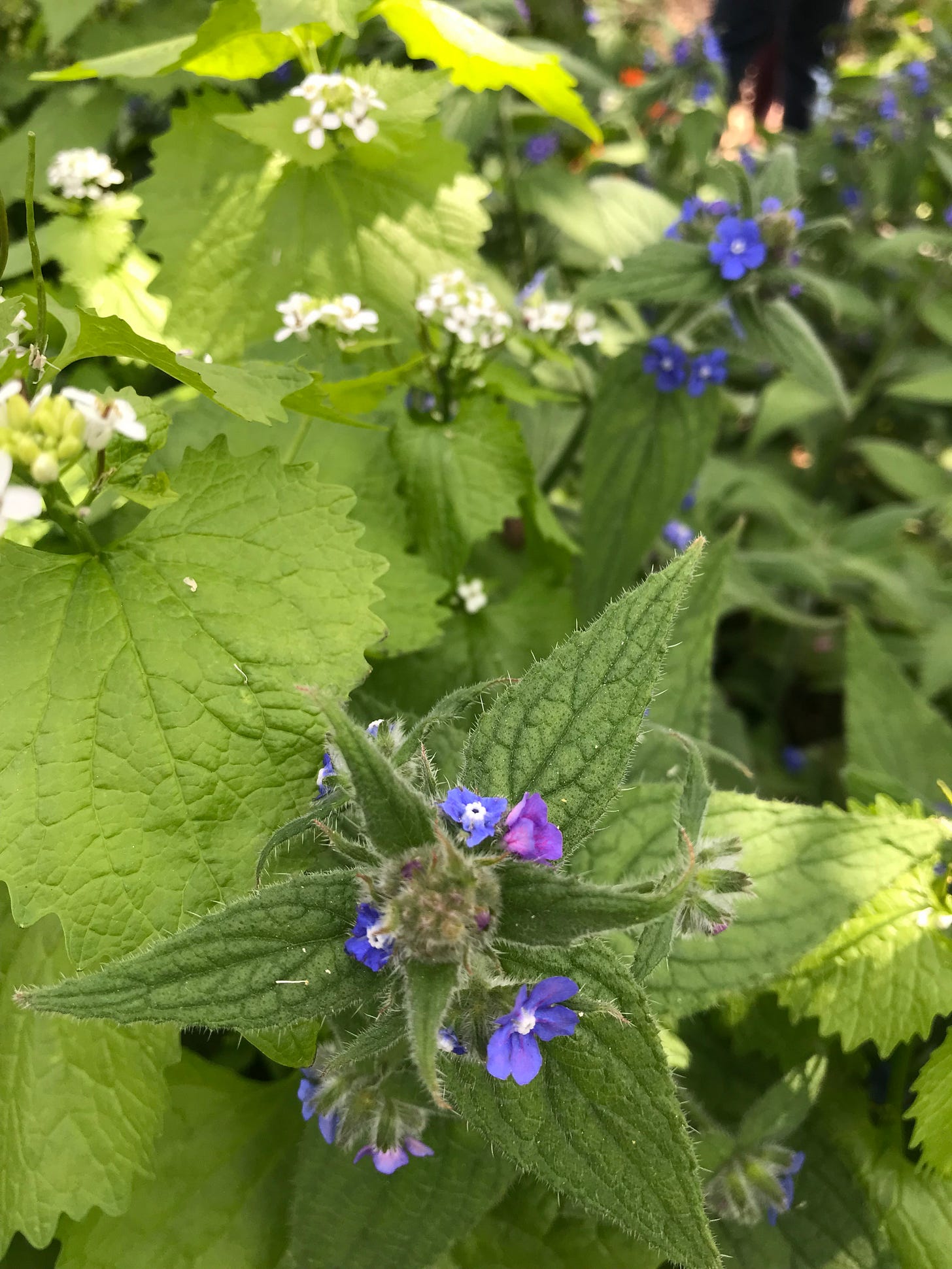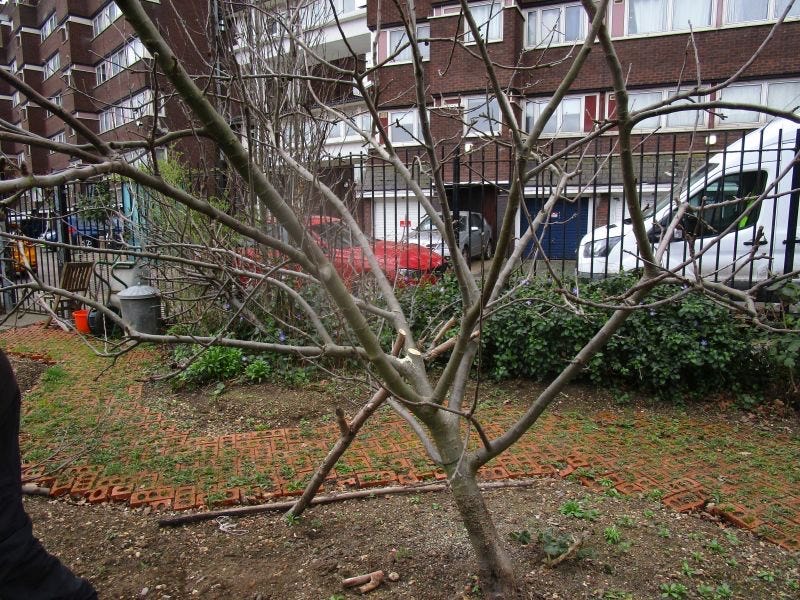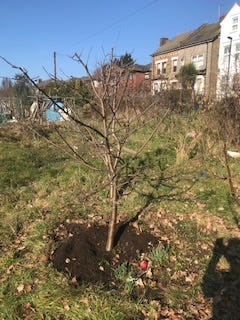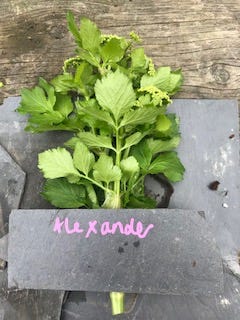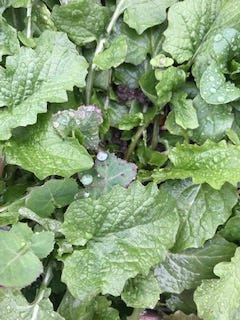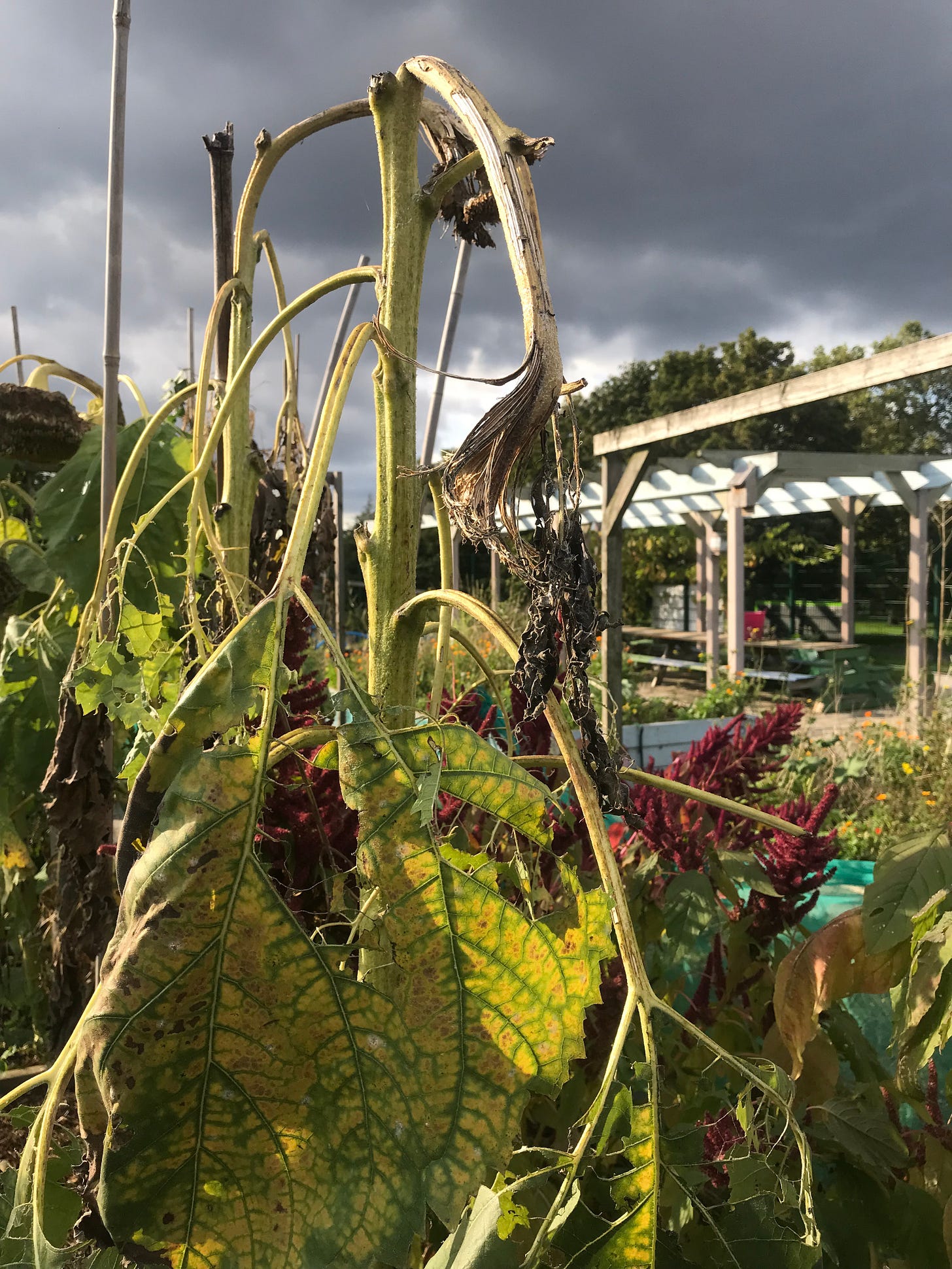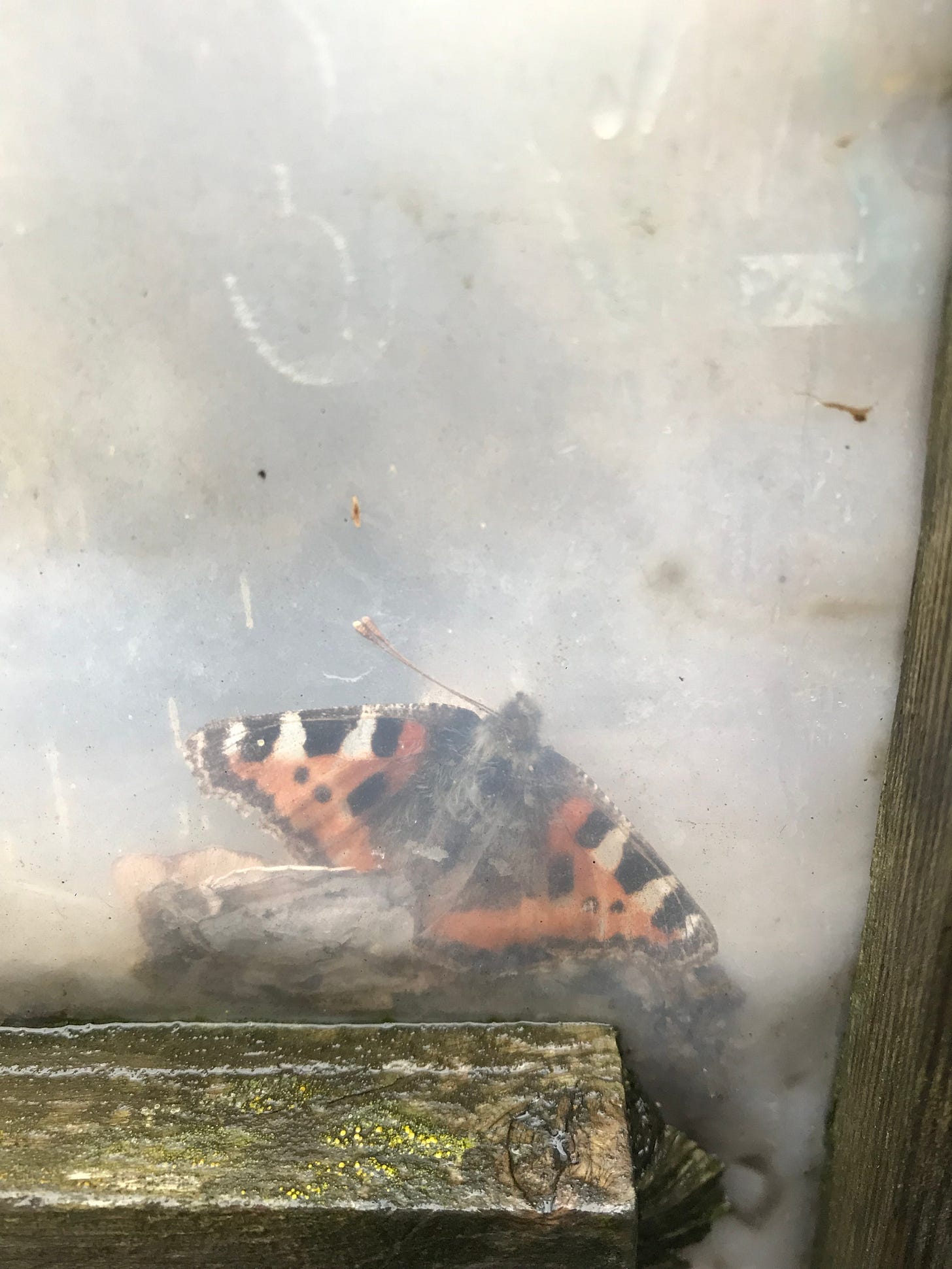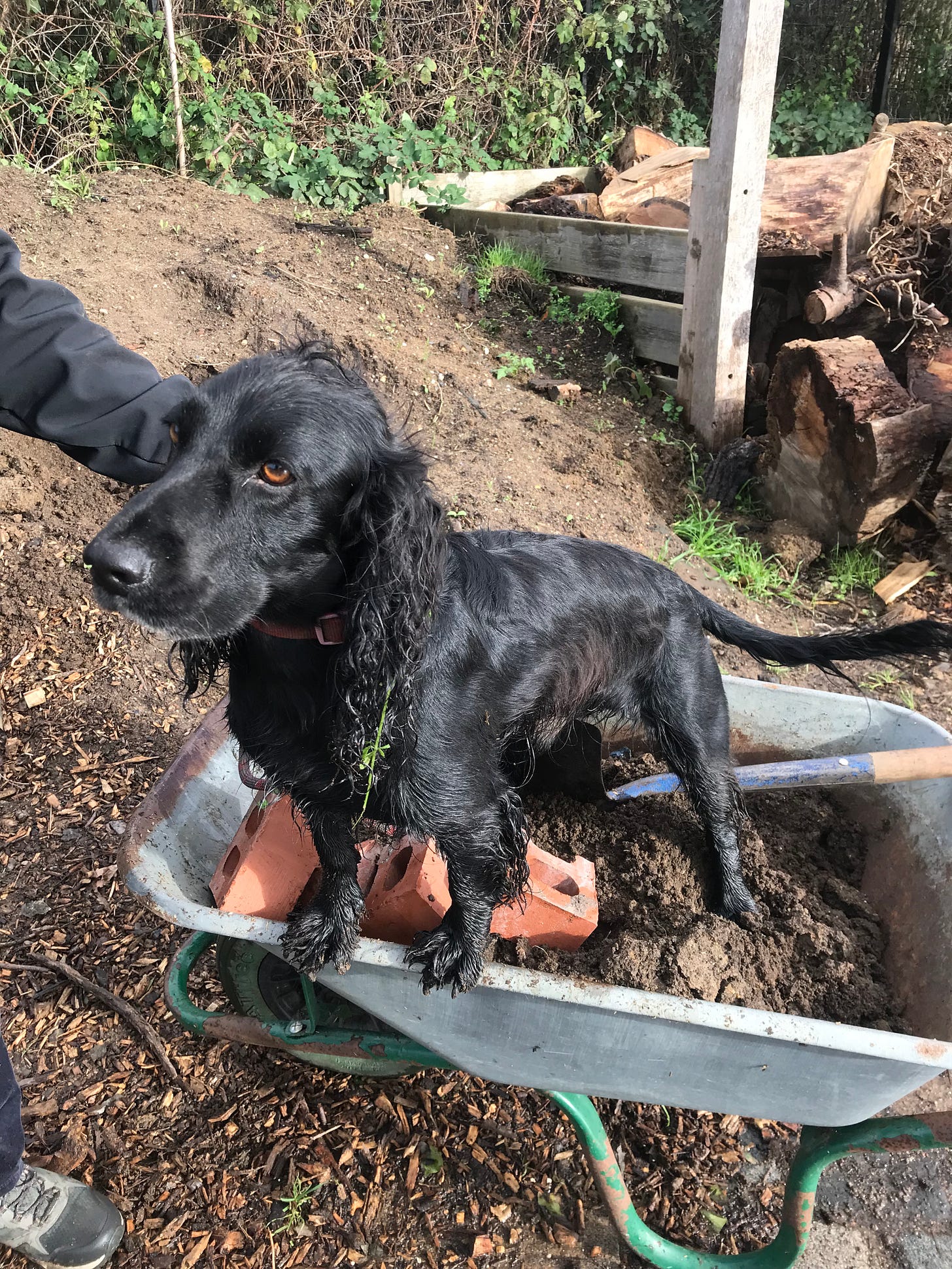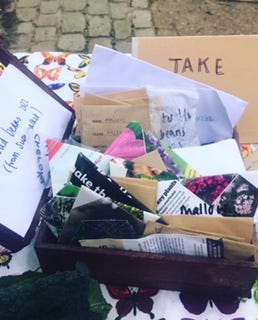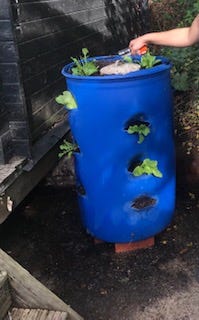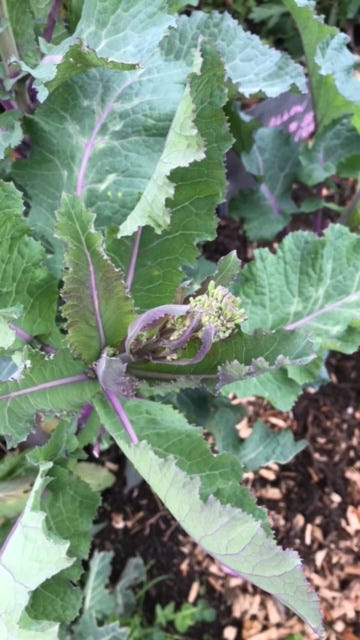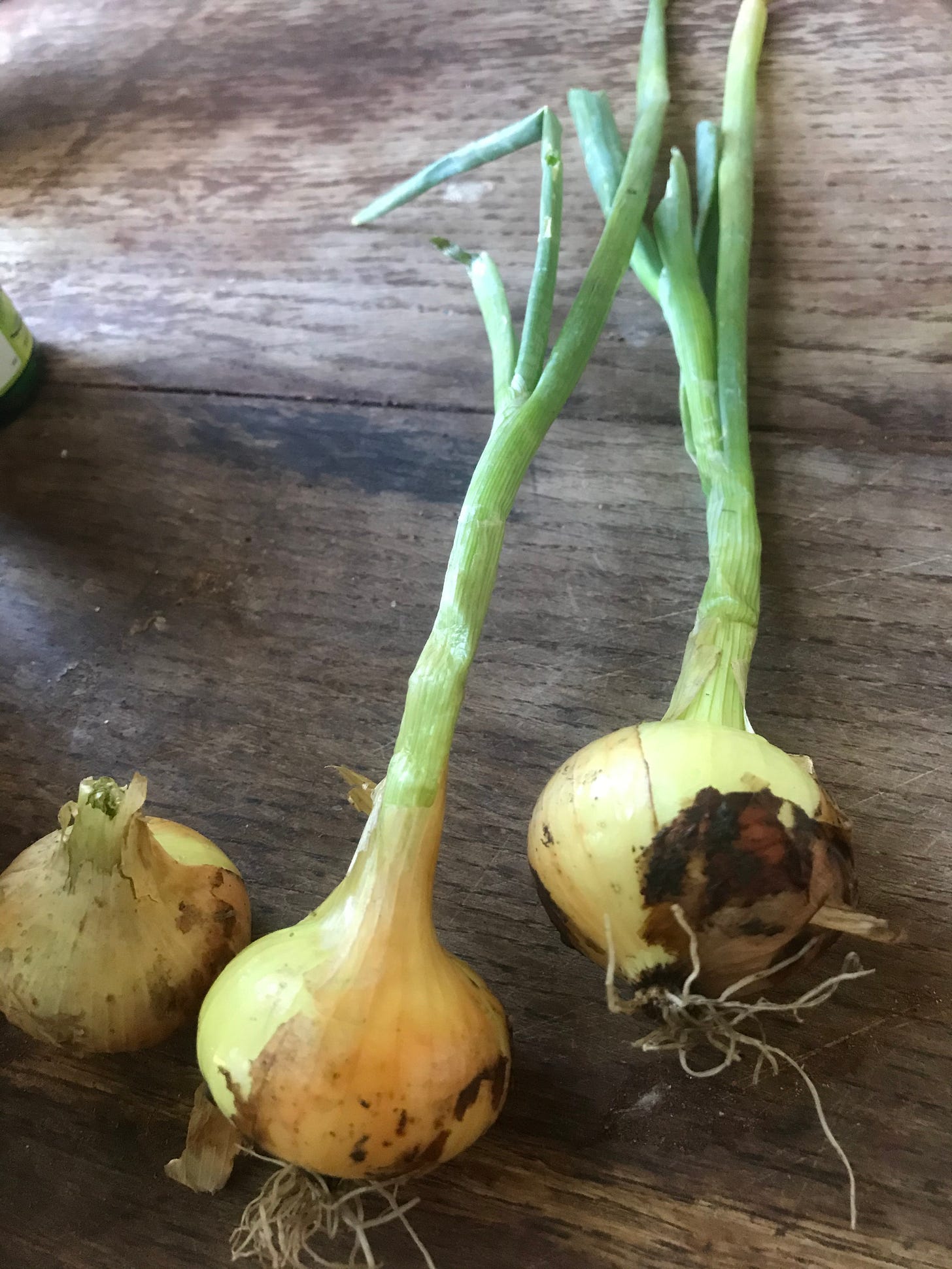Due to a funding hiatus, I’m leaving my part time job of 4 years as a Garden Worker at the amazing Glengall Wharf Gardens in South London. So the forest garden and raised beds will be under the care of trusty volunteers for a while and I made a few videos on basic forest garden maintenance to share with them. I enjoyed doing them so much I thought I’d do an article on substack too. Here are 7 essential things to do to maintain the forest garden. I should mention here that the forest garden, designed by Sue Amos, is planted into Hugel mounds which were installed on top of the concrete and cobbles of a disused wharf by the old Surrey canal. (Videos at the foot of the article if you prefer visuals)
Observation
The first thing to do is observe. There are little gems hiding away in the understorey - golden raspberry bushes, honeyberries, some Soapwort, a St John’s wort…. They may get overlooked, under watered and then die, thus sadly reducing the diversity of your food forest. (There is also a Kiwi Issai climbing up the chicken coop fence opposite the composting area).
Also it’s good to get to know your brambles from your raspberries, your green alkanet from your comfrey, so that you don’t hoik out valuable plants. (By following Permaculture principle ‘observe and interact’ we have a better chance of fulfilling another principle ‘produce no waste’).
The principle ‘Each element has multiple functions’ means that Observation can be done in tandem with Watering, see below
2. Watering
Watering is a great opportunity to see what’s going on in your garden because you need to visit the whole site anyway. Yes, it is time consuming, especially when you are not allowed to use a hose but, thanks to regular volunteers’ efforts, we have decent rainwater collection and can soften the blow of a massive water bill.
Water the trees once a week with thorough drench of 20 litres each. If they are in a container then you may need to water more frequently as they dry out more quickly. When watering aim for the root zone and check to see if water is draining well. (If it’s not, then there may be surface capping - this applies only to raised beds as Hugels have woodchip covering).
3. Pruning and coppicing
Prune twice a year, if at all.
Winter prune to encourage growth in the direction you want it, open out the tree so light can reach the fruit and remove all badly placed and dead or diseased branches.
Summer prune apples and pears to encourage fruit formation. Also, summer prune the stone fruits so as to lessen the risk of fungal diseases which are more likely to get a hold in wet cold weather. Keep within 20 to 25% off each year. Look it up on RHS or Orchard project website.
Fruit bushes may need to be pruned to rejuvenate and ensure maximum fruiting.
Hazels need to be coppiced in winter before the catkins appear ideally, primarily because they grow so big and shade out or swamp the fruit trees and bushes. They are a great resource for making structures in the garden and the surplus wood can be left on the ground of forest garden or given away to volunteers who like whittling.
4. Mulch
The Hugels will always be decaying and that’s a good thing, but it does mean that we need to top up the surface with organic matter. Avoid bare soil as much as possible or the beds will dry out and weds will take up residence. Twice a year it’s good to place a generous layer of manure around the trees and fruit bushes (Spring and Autumn). The rest of the time we can use woodchip and chop and drop of our ‘weeds’, see below.
5. Weed
There are dominant plants that will take over - one year it was grass allover the Hugels1, another it was Alexanders (we made a lot of Alexander soup, but it was hard to entice people with it after a while!)
This year it seems to be Nipplewort - edible but not very exciting despite the name. Surplus plants such as Mallow, after flowering, can be chopped and dropped and left on the surface of the mounds to rot down and feed the soil life. If we feed the soil we are feeding the plant.
There’ll always be bindweed and brambles to remove at the earliest available opportunity. They can be chopped into 5 cm pieces and hot composted.
Having made these points it’s good to bear in mind that being too tidy might not be great for beneficial insects, which we want to encourage to keep the pests down and pollinate our crops. (Principles ‘work with nature’ and ‘least effort, maximum effect’).
6. Harvest
This is an important and enjoyable part of maintaining a forest garden.
As well as dog-friendly, the garden is wildlife-friendly which means birds, squirrels and insects may get there first. As a Permaculture land site, we‘re aiming to operate on a fairshares2 basis. The birds can have fruit and nuts at the top, but the lower branches can provide us with abundance too. By observing and interacting we can apply the Permaculture principle ‘obtain a yield’. Harvesting fruit when it is ready can take the weight off the branches which means the tree can use energy on ripening what is left. We are mimicking a browsing or a foraging animal. With beans and many other veg, the lower branches produce the fruit first. If you can twist it off, it’s ready.
7. Move things around
The best time of year to do this is Autumn when it’s not too cold and more likely to rain. If something looks unhappy ( stunted growth) where it is try another site in the garden. Get as much of the root ball as you can when transplanting and water in well at the new site. If you can’t move it, try watering it with a liquid feed.
Other stuff
Composting
The stuff that isn’t chopped and left in situ can be composted. It’s important to have a steady supply of compost for seed sowing and potting on. The more you turn the hot compost heaps, the quicker you’ll have great growing media for seeds.
It’s great to have this on the go - use comfrey, nettles or even bindweed for a boost to the soil around the plants.
Propagation
Seed saving
Easy to do, free of charge and fun to swap with other gardeners at an event in February. Charles Dowding says Valentine’s day is a good day to start sowing seeds under cover when light levels are increasing .
An important part of propagating is by division and cuttings. Again the RHs Website is a good resource. You can use willow to make a rooting hormone aid.
The worm tower
This is the blue planter by the kitchen. The soil is super-nutritious due to the worms that live in the central tube. Their juice leaches out into the soil around them and feeds the plants. It’s a great place to grow salads and annuals that will be harvested regularly. Keep the worms happy by layering cardboard and kitchen waste (except onions and citrus) once a week or more if possible. Keep the lid on to prevent them drowning when it rains.
The raised beds
Crop rotation helps eliminate the build up of pests in the containers and raised beds. The main veg families are onion, cabbage and beans. The fourth grouping is root crops
Before planting in the raised beds, refresh the top layer of soil with new compost, 5 cms at least.
The physic garden
There is a plan for this area but great to focus on healing herbs such as Yarrow, Dandelions, St Johns Wort, chickweed - most of which can be transplanted from elsewhere in the garden.
The fence
The fence is great place to grow climbers. We have had Mashua and Clematis growing along there, the challenge is keeping them watered as they are in troughs.
Hope you found this useful and find time to read more widely following the links I’ve peppered the article with.
See below for highly professional videos of the garden.!
A Hugel Kultur is a way making raised beds made from waste plant material, usually logs, with compost, weed, cardboard and other organic matter piled on top. The logs rot down and feed the plants growing in the mound.
One of the three Permaculture Ethics , (‘Earthcare, Peoplecare and Fairshares’), which means we create abundances for all - not just humans, because we recognise the interconnectedness of all things in nature, we ideally create a cycle of giving and receiving.
The toilet mound.
The importance of composting





